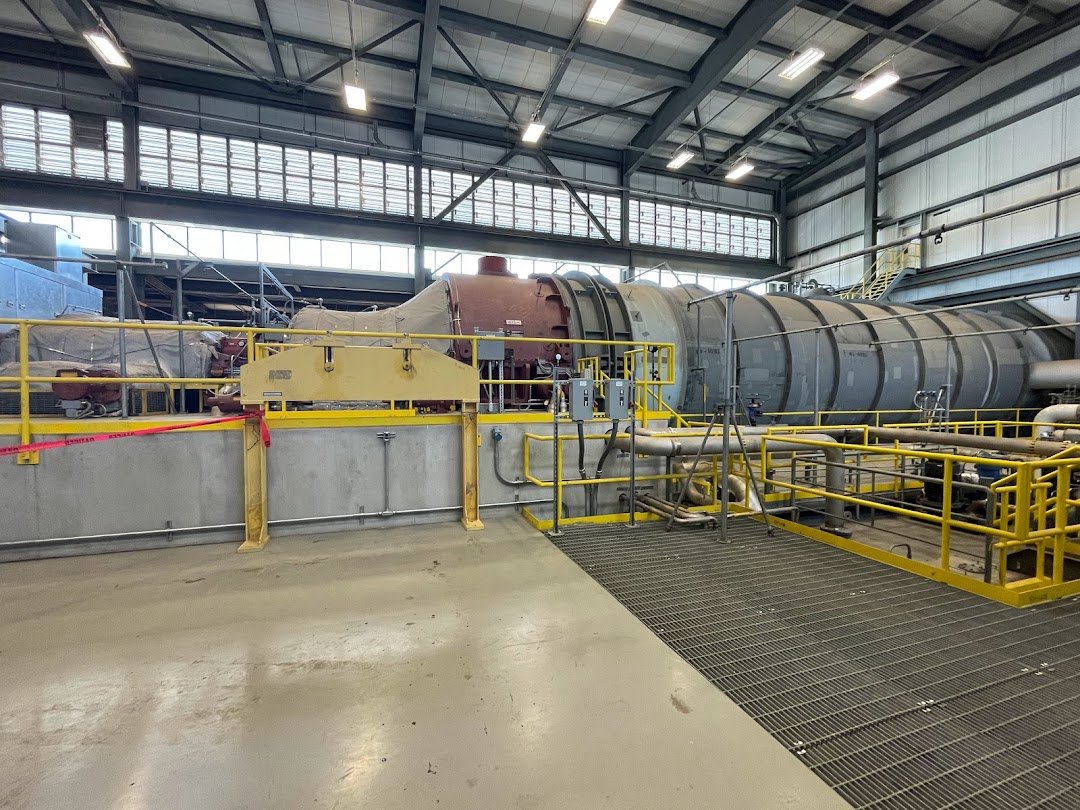Energy Transition in Rural America (May 2022) - Deer Creek Station
By Sarah Komoroski
On Monday, May 16th, our Energy Transition in Rural America class made our second stop on our week-long field experience at Deer Creek Station. Deer Creek is located near Brookings, South Dakota and provides enough electricity to power over 200,000 homes. It is owned by Basin Electric, a not-for-profit generation and transmission cooperative serving its members throughout 9 states. The Basin System is interesting because it is one of only a few three-tiered electric cooperative systems in the nation. Throughout the week, our class had opportunities to tour all three levels of the system, and Deer Creek Station was a great example of the generation assets and “economies of scale” that Basin provides to its member cooperatives. When we arrived at Deer Creek, we were greeted by operations and facilities staff from the power plant.
We started with lunch and a short presentation about the power plant. Deer Creek Station is a 300 megawatt combined-cycle power plant, meaning there are two turbine-generator sets. One turbine is fired by natural gas, and the other is driven by steam generated from the heat exhausted from the natural gas turbine. Both of the turbines are connected to generators, which convert the mechanical energy from the spinning turbine into electricity, which flows to the electric grid using less than one mile of 345-kilovolt transmission line. The transmission line connects directly to a Western Area Power Administration (WAPA) switchyard, where the electricity then flows to the larger grid. The plant uses natural gas delivered via a 14 mile underground pipeline to the plant from the Northern Border main gas transmission pipeline. The gas is purchased from Dakota Gasification Company. Dakota Gas gasifies lignite coal into pipeline-quality natural gas at the Great Plains Synfuels Plant near Beulah, North Dakota, which our class had the opportunity to tour on day 4 of our field trip. The proximity to the WAPA switchyard and the fuel pipeline made this location in Brookings ideal for this project siting.
After lunch and the introduction presentation, we began our facility tour in the control room. Deer Creek Station is what’s called an “intermediate” power plant. All power, including power produced at Deer Creek, is produced and delivered at the exact time and quantity at which it is needed. Because of Deer Creek’s combined-cycle nature, it takes approximately 6 hours to start up from cold. So, it is not fast enough to be a peaker plant, which turns on and off for short periods of time in order to meet peak demands. However, it is also not used as a baseload plant that is on nearly all of the time. The operators ramp the plant up and down based on the demands of the bulk electric grid’s wholesale power market, which is called the Southwest Power Pool (SPP) in this region. The control room also has remote operations of other combustion turbine plants in other states including North Dakota, Wyoming, and Montana, resulting in Deer Creek controlling over 1,400MW of Basin’s power.
We also had the rare opportunity to tour this plant during a scheduled outage, which meant we were lucky enough to see the infrastructure very close up on our tour. During normal operation, the turbines reach extreme temperatures and are noisy, making the turbine room hot and difficult to carry a conversation in. It was really exciting to walk through the plant and directly beneath the natural gas turbine for a close up look. I’m always astonished by the huge scale of the equipment that keeps electricity flowing to our houses and businesses, even in this medium-sized plant. Overall, this was an exciting and fast-paced second stop and introduction to generation facilities as we moved deeper into the Basin Electric system.



